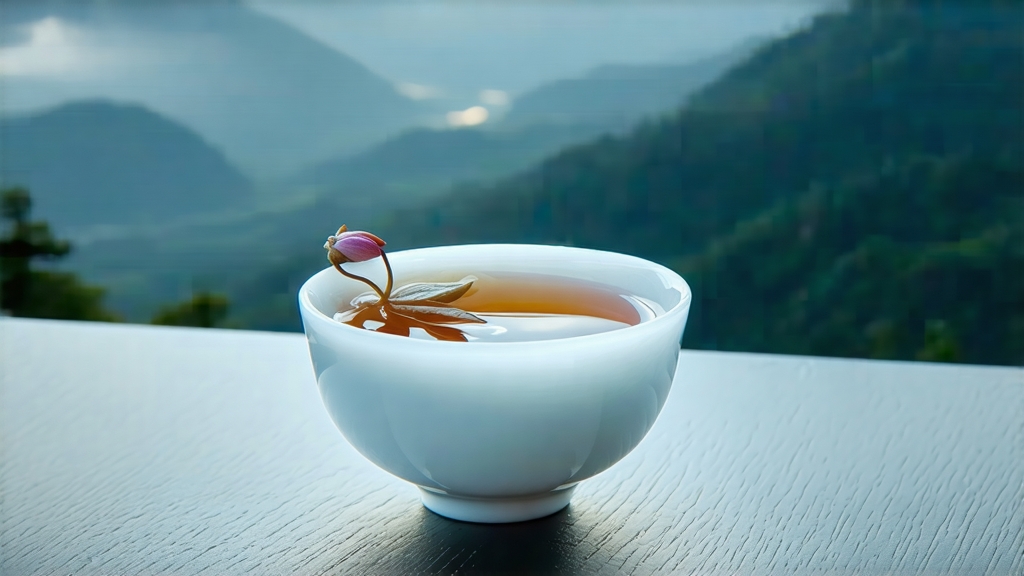
Among the six great families of Chinese tea, white tea is the least theatrical: no rolling, no roasting, no fierce charcoal fires—only time, air, and the patience of the maker. Within this minimalist lineage, Fuding Silver Needle (Bai Hao Yin Zhen) sits at the apex, a tea so understated that its very subtlety has become its signature. To the uninitiated, the experience can feel like sipping chilled moonlight; to the devotee, it is a living archive of Fujian’s coastal climate, Daoist restraint, and Song-dynasty courtly taste.
History: From Palace Tribute to Global Muse
The first written record of “silver needle” appears in the 1064 CE treatise Dong Xi Shi Cha Lu, where the imperial inspector Cai Xiang praises “white downy shoots, straight as needles, brewed in spring water, emitting a honeysuckle coolness.” During the Song era, compressed white cakes were whisked like matcha; by the Ming, loose-leaf fashion prevailed, and the tribute quota specified only the fattest March buds. European merchants encountered the tea in the late 1800s when Fuding port opened under the Treaty of Tianjin; silver-tip crates reached Paris salons, where Symbolist poets likened its flavor to “the moment between sleep and waking.” In 1972, Silver Needle accompanied Nixon on his ice-breaking visit to Beijing, sealing its diplomatic mystique. Today, small-lot Silver Needle commands higher auction prices than many famous rock wulongs, yet smallholder farmers still hand-pick it under bamboo baskets, perpetuating a craft older than the Forbidden City itself.
Micro-Terroir: Why Fuding Matters
Chinese law restricts the geographical indication “Fuding Silver Needle” to buds harvested within 27°16′–27°41′ N latitude and 120°04′–120°29′ E longitude, an area where red sandy loam meets marine fog. The Daiyun mountain range blocks cold north winds, while the East China Sea breathes warm, iodine-laden vapor that condenses on tea leaves at dawn. This diurnal oscillation—8 °C difference between day and night—slows oxidation enzymes, allowing the buds to accumulate L-theanine and a rare apricot-lactone that reads as white peach on the palate. Neighboring Zhenghe county produces a darker, broader bud with more tannin; only Fuding delivers the jade-white down and mineral finish that connoisseurs call “stone fruit clarity.”
Harvest Calendar: One Dawn, One Standard
Authentic Silver Needle is plucked during the “first spring awakening,” a 72-hour window around Qingming festival when the bud reaches 2.5–3 cm but has not yet unfurled into a leaf. Experienced pickers use a “twist-lift” motion to detach the bud without squeezing sap; nails must be trimmed to avoid oxidant bruising. A skilled woman can gather 600 g of fresh buds in a dawn shift; 25,000 buds equal 500 g of finished tea. Any later, and the bud swells into a “fish-tail” shape, disqualifying it from top grade. Rain-day buds are rejected because surface moisture extends withering time and mutes fragrance. Thus, every kilo of Silver Needle embodies a wager on perfect weather, a gamble farmers track with barometers older than the People’s Republic.
Craft: The Art of Doing Almost Nothing
Unlike green tea’s kill-green wok or oolong’s bruising barrels, Silver Needle undergoes only two active steps: withering and drying. Yet within that simplicity lies a labyrinth of micro-decisions.
- Outdoor Withering: Buds are laid on bamboo sieves called lian, stacked at 45° to catch oblique sunrise. For the first two hours, turners shuffle every twenty minutes to ensure even moisture loss; ambient humidity must stay between 65–72 %.
- Indoor Withering: As midday sun intensifies, sieves move to a ventilated loft where charcoal-heated air (28 °C) wafts upward through slate channels. Here the tea “sleeps” for 24–36 hours; masters listen for the tell-tale rustle that signals 80 % moisture loss.
- Selective Sun-Drying: If the morrow dawns clear, buds return to soft morning light for a final 30-minute “color-fix,” a nod to ancient Daoist yang absorption.
- Low-Temperature Bake: